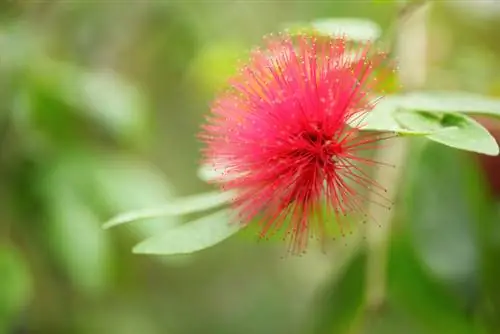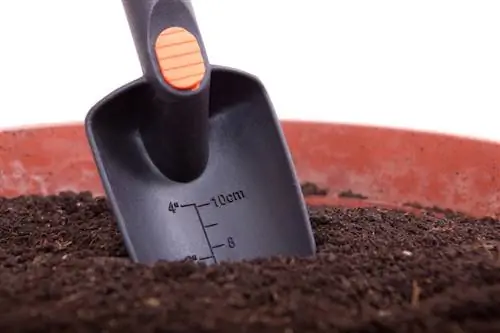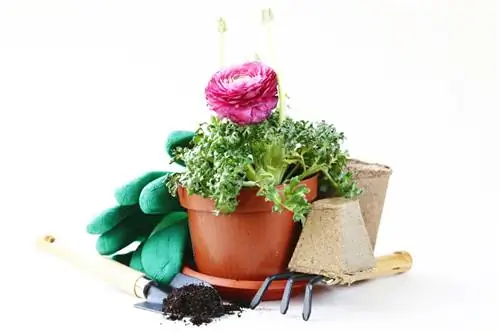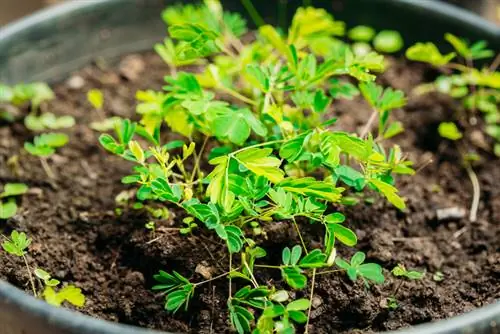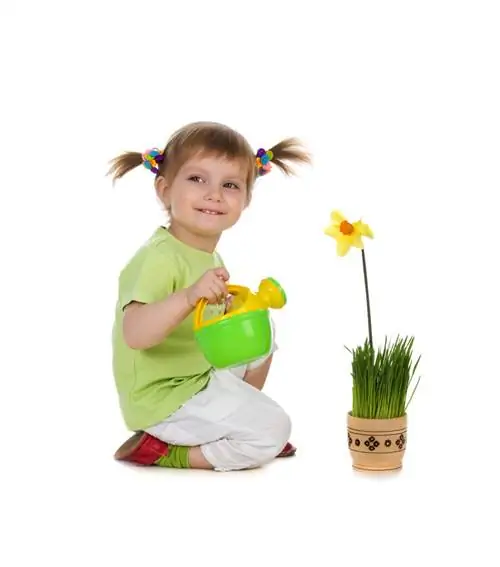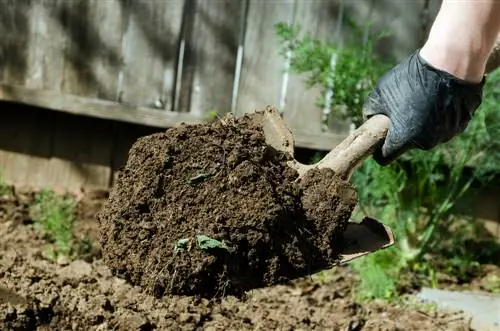- Author admin [email protected].
- Public 2023-12-16 16:46.
- Last modified 2025-01-23 11:21.
Keeping a mimosa in the room is not easy. Although it is easier to care for than generally assumed, the plant only thrives under optimal conditions. This is what proper care looks like. A small care guide.
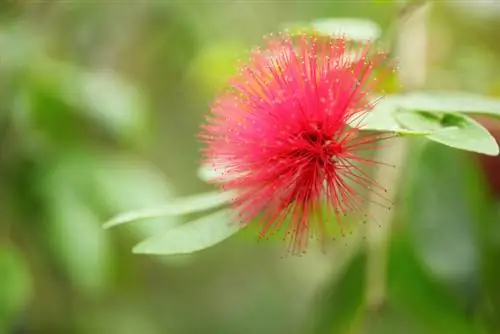
How do you properly care for a mimosa?
A mimosa needs a bright and warm location, regular watering when the top layer of soil has dried, high humidity of at least 50%, economical fertilization and protection from pests. Touching the leaves should be avoided as this robs the plant of strength.
Can you care for a mimosa outdoors?
In summer, the mimosa really appreciates being outdoors. She prefers a sheltered place that is very bright and warm. It tolerates morning and evening sun well, but direct midday sun is not optimal.
You can keep mimosas in your room all year round at 18 to 22 degrees.
How to water the mimosa correctly?
Mimosa must not dry out completely. However, too much moisture is harmful. Only water a mimosa when the top layer of soil has dried. Avoid waterlogging and always pour water out of the planter or saucer straight away.
Mimosa needs relatively high humidity. It should be at least 50 percent. If necessary, place bowls of water near the plant. However, you should avoid direct spraying.
Use soft water or rainwater for watering.
Does the mimosa need to be fertilized?
Young mimosas are generally not fertilized. You can fertilize older plants, but it is not necessary. If you don't want to miss out on fertilizing, add some liquid fertilizer every two weeks or every month. Reduce the recommended dose to half.
Can you cut a mimosa?
Mimosa does not tolerate pruning well. If you cut the shoots, there is a risk that the plant will not sprout again. Therefore, avoid cutting.
If you have experience with keeping bonsai, you can try to shape the mimosa by cutting.
How often do you have to repot mimosas?
The roots of the mimosa need enough space to develop. The pot shouldn't be too big either, as this will have a negative effect on the flowers.
If possible, repot a mimosa in spring when roots grow out of the bottom of the drainage hole.
You should also repot freshly purchased plants straight away.
What pests should you watch out for?
The spider mite is the most common. It leaves small webs on the leaf axils. The infestation is promoted by too low humidity. Make sure the humidity is increased.
You should fight spider mites immediately as they can be the cause of falling leaves.
Rinse the plant and use chemical agents against spider mites (€16.00 on Amazon).
What diseases can occur?
Yellowing of the leaves indicates jaundice. It is caused by waterlogging. In addition, roots and shoots can rot if the root ball is kept too moist. Water less. You should first let very wet root balls dry.
Why does mimosa lose its leaves?
If the mimosa loses its leaves, the following causes may be responsible:
- location too dark
- Plants are too close together
- Humidity is too low
You can try to save the mimosa by repotting it, completely replacing the old soil.
Find a favorable location where it is bright and warm. The plant also tolerates partially shaded locations. You should avoid direct sunlight at midday.
Why shouldn't you touch the leaves?
The leaves of the mimosa react to mechanical stimuli and heat. When you touch them with your fingers or an object, the leaves fold up. A chain reaction often sets in, in which all the leaves gradually fold in. A lit match or lighter also causes the same reaction.
It takes about half an hour for the leaves to unfold again. This process robs the mimosa of a lot of strength. Some mimosa species do not cope well with this stress and die. Therefore, avoid touching the leaves as much as possible.
Drafts or wind don't affect the leaves. Folding is triggered exclusively by mechanical stimuli.
How to properly overwinter a mimosa?
Overwintering mimosas is not easy. Keeping it in winter causes problems for the plant. The low humidity plays a particularly important role here. That's why mimosas are often only kept as annuals, especially since it's quite easy to grow new plants from seeds. If you want to try overwintering a mimosa, be sure to keep it properly.
The mimosa is overwintered in the living room or in another suitable place. It has to be as bright as possible. Do not place the mimosa directly next to a warm radiator.
In winter the mimosa is watered even more sparingly than in summer. There is no fertilization at all during this time.
Tip
Mimosa is not considered poisonous. At least so far, no cases of poisoning have been reported. However, you should reconsider keeping a mimosa if there are children and pets in the house.

